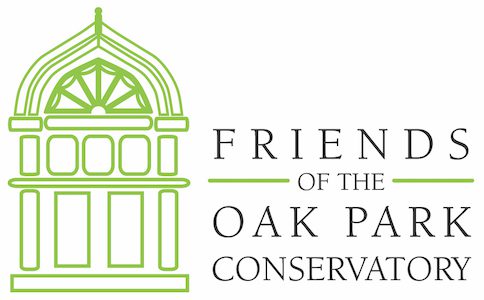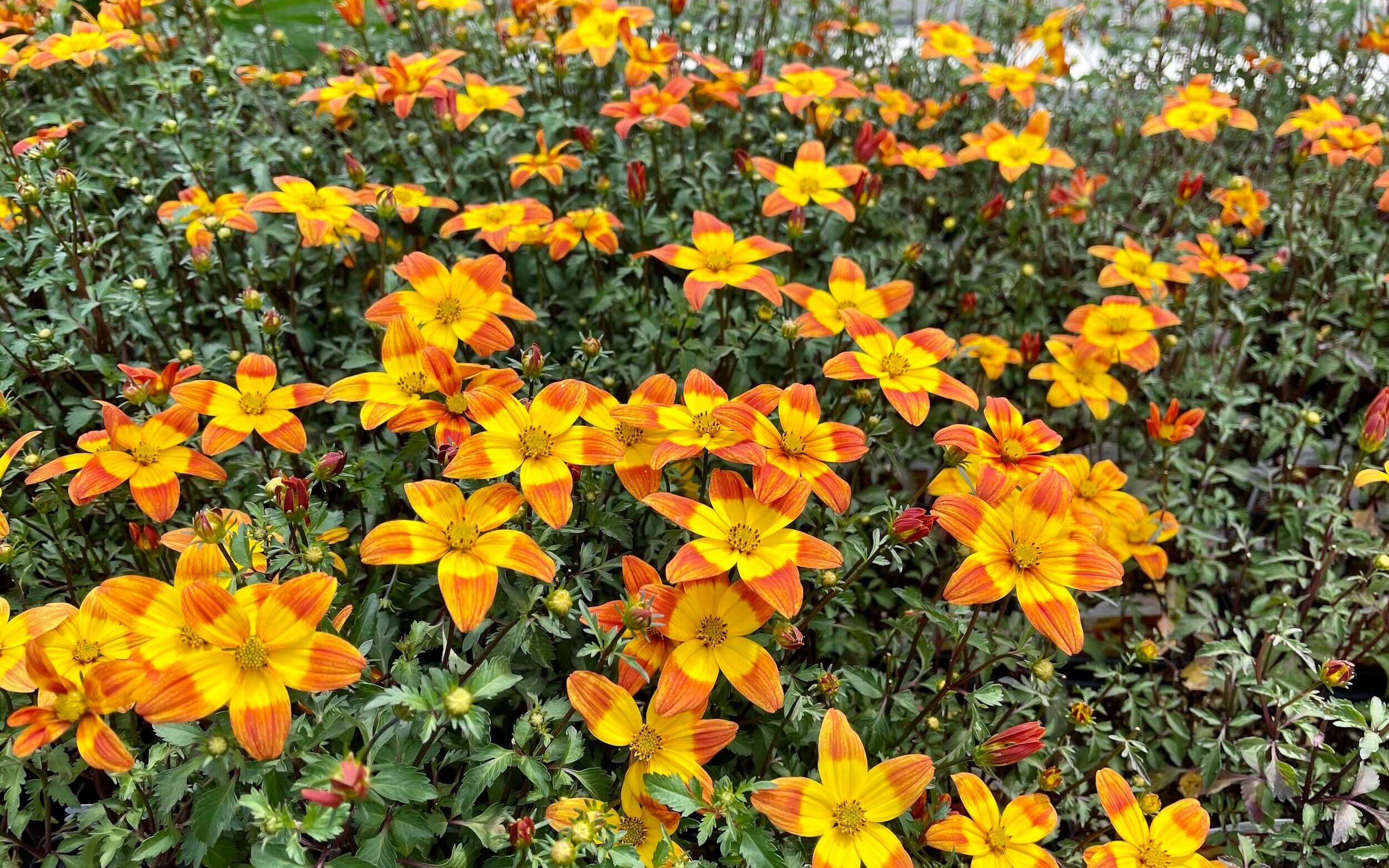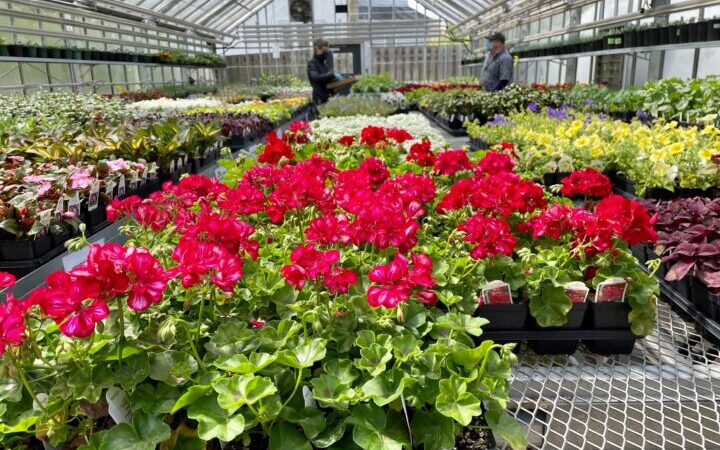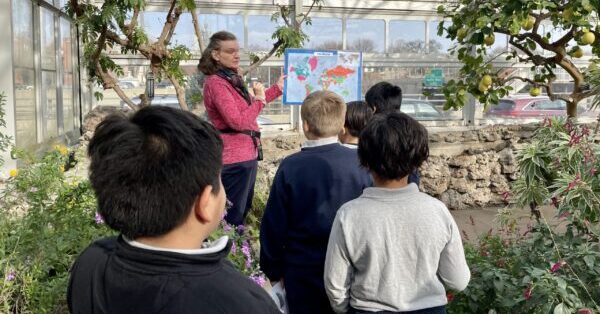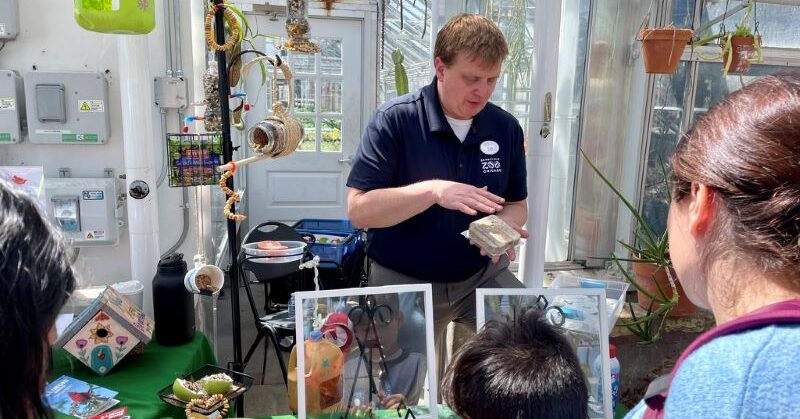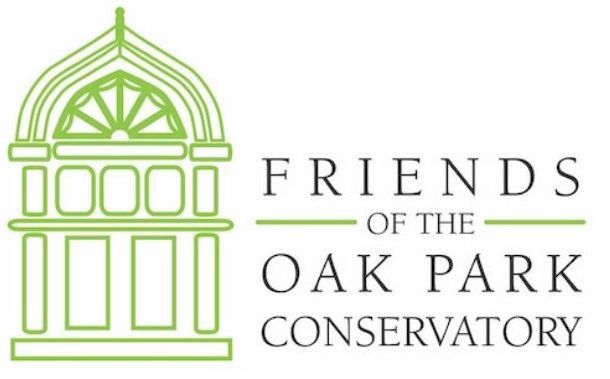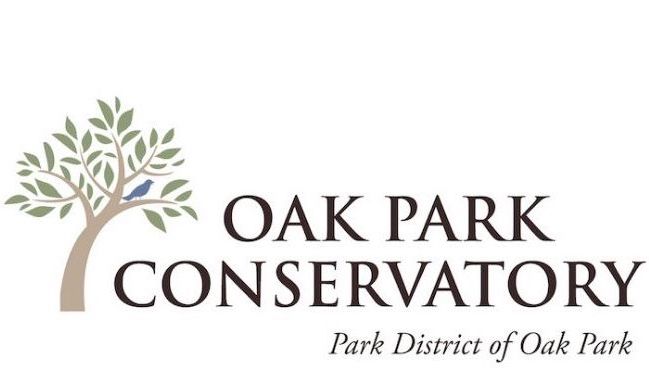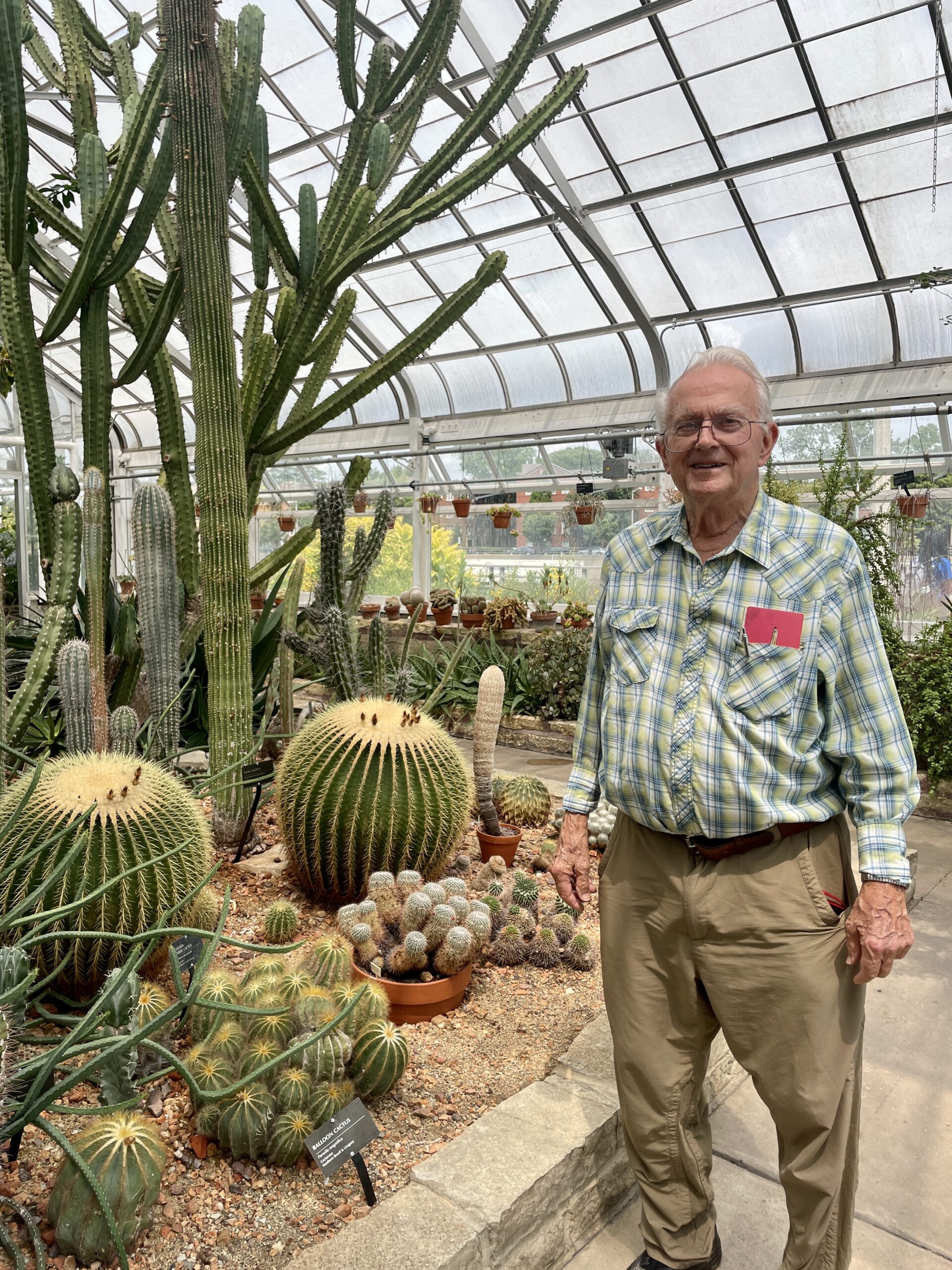
In July 2024, we had a visit from Ray Pawly who used to live in this area and worked at the Brookfield Zoo many years ago. He wrote us a letter and we felt his story and the history of the Oak Park Conservatory should be shared.
What a transformation! The Oak Park Conservatory keeps improving every year. And every year the greenery and trees in the main section of the Conservatory become lusher and more verdant, including old friends like two of my donations from years past as well as the Conservatory’s carefully selected botanical additions. Two favorites like the parrots along the pathway have their verbal games they play with visitors. In fact, I have long felt that the partnership between plants and animals can be most eloquently driven—and highly appreciated by visitors—by presenting profusions of plantings in zoos on the one hand and conversely, providing a few selected creatures in a conservatory on the other.
As always, I am drawn to the carnivorous plants in the vestibules on either side of the service area doorways. These spectacular little botanical predators are reminiscent of the Okefenokee Swamp and its many acres of beautiful Pitcher Plants among the alligators, where I spent many months as an aspiring herpetologist.
But the most astonishing revelation was the spectacular array of cacti and other arid plants in the easternmost solarium! Never, in my visits to any midwest conservatories have I seen such beautifully kept cacti that are completely true to shape and condition as can be seen in their natural habitat! Oak Park Conservatory is very likely unique in the exhibition and care of these delicate plants whereas even arid area conservatories have problems with proper cacti maintenance. This is the only conservatory where I can recommend seeing arid plants in such fine condition.
On another track, Oak Park Conservatory is extremely fortunate in that it has side-stepped two near-fatal disasters to its existence.
The first threat was when the Eisenhower Expressway (I-290) began its westward construction from Chicago in 1955. Only by dint of its location on the south side of Garfield Street did the Conservatory avoid being totally demolished. Had the Oak Park Conservatory been across the street from its present location it would have been crushed under the relentless westward construction of the expressway.
The second threat to its existence was in the mid-1960s when the Conservatory was being threatened by abandonment. Plants were dying and staffing was virtually non-existent. Intentions were afoot to demolish the facility. It was at that time that a few of us, independently, stepped up to renew efforts to promote a restoration of the Conservatory and hopefully ensure its continuation.
Having been hired as General Curator at Brookfield Zoo in 1964, I was appalled at the barren patches of unplanted dirt in such facilities as the Zoo’s Perching Bird, Primate, and Reptile Houses. Immediately I had set about to ask the Garfield Park Conservatory under the leadership of John Lungren, for help. He provided truck-loads of surplus plantings that we put to good use at Brookfield Zoo, restocking the plantings, some of which survive to this day. However, since I had seen the plants and their plight at the Oak Park Conservatory, where some choice examples still survived. I knew these would be exemplary additions to Brookfield Zoo’s needs—but the loss of the Oak Park Conservatory would be a far greater disaster, something that should be countered at all costs.
From that point on, whenever I was asked to give a talk about Brookfield Zoo and its animals in the Oak Park area, along with some selected animals I would also bring a small potted plant. At the conclusion of my talk, I would pick up the little potted plant to announce the fate that awaited the Oak Park Conservatory. My point was that such a loss would be a disaster to the Community and that the Conservatory needed to be renovated instead. I would emphasize that if the Conservatory were to be abandoned, the Brookfield Zoo would be delighted to receive many of the more spectacular specimens still surviving. The idea was to leave the fate of the Conservatory in the minds of as many in the audience as possible. In fact, it was at the conclusion of one of my talks that I met a young lady who was presenting a Conservatory appeal for its resurrection. How gratifying it was to meet up with someone who was fully dedicated to the cause!
Oak Park Conservatory is a favorite destination and when I come to Chicago, I always come away greatly inspired by the progress that is continually being made over 50 years later.
In fact, it was on my trip to Chicago in July during my Oak Park Conservatory visit that I had the distinct pleasure of meeting Executive Director, Judy Klem who heads up the “Friends”. Certainly, the “Friends” has a marvelous project to shepherd, and the Oak Park Conservatory can rightfully take its place among the leading conservatories in the country. Every employee and every volunteer is a hero of the Oak Park Conservatory, which has come a long way. I certainly expect to make more visits in the years to come!
Ray Pawley
FOPCON Friend

